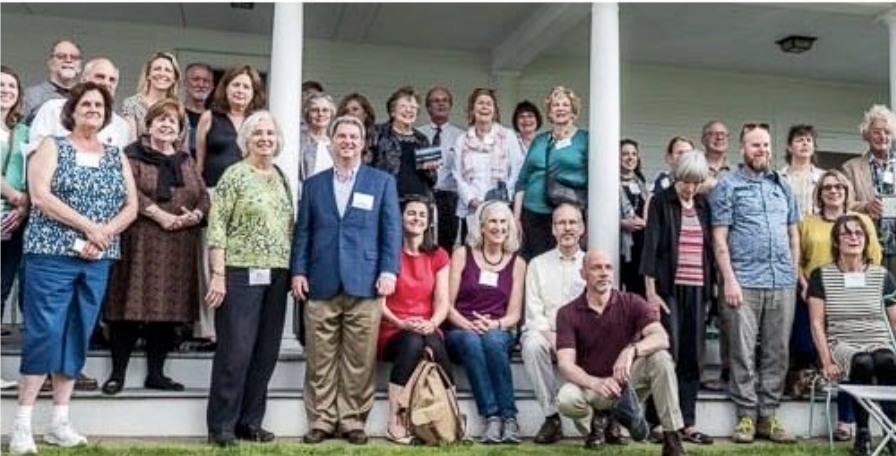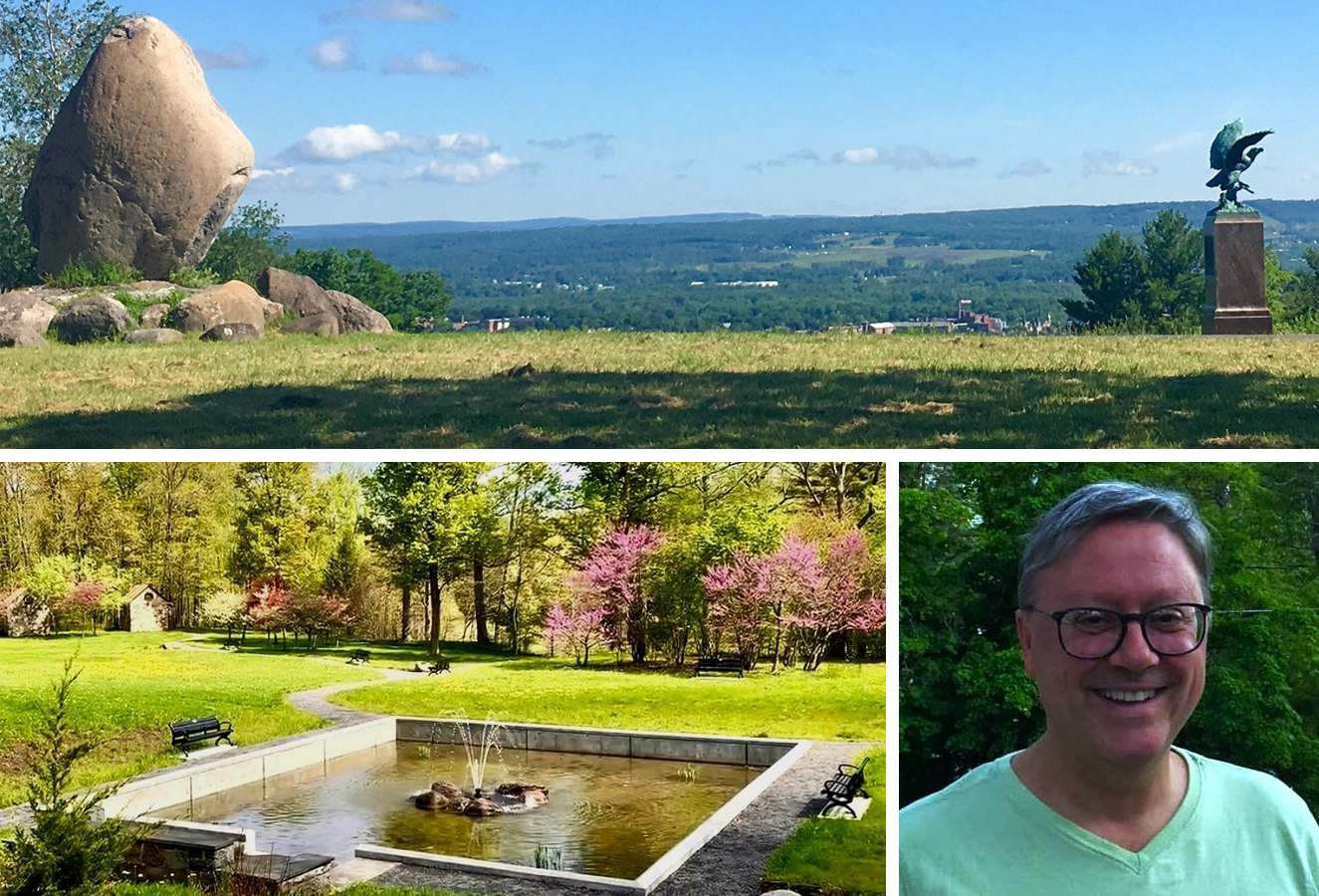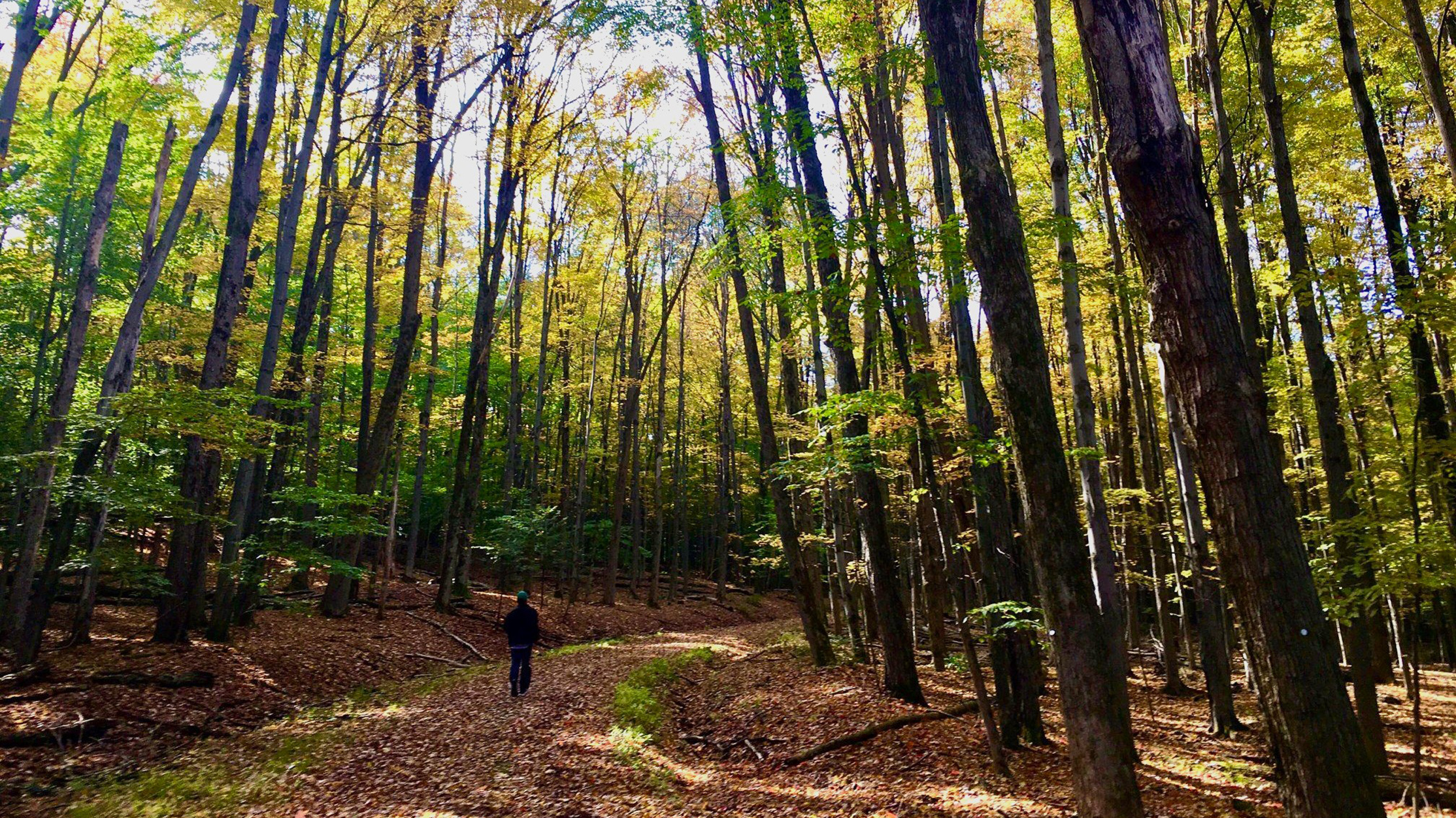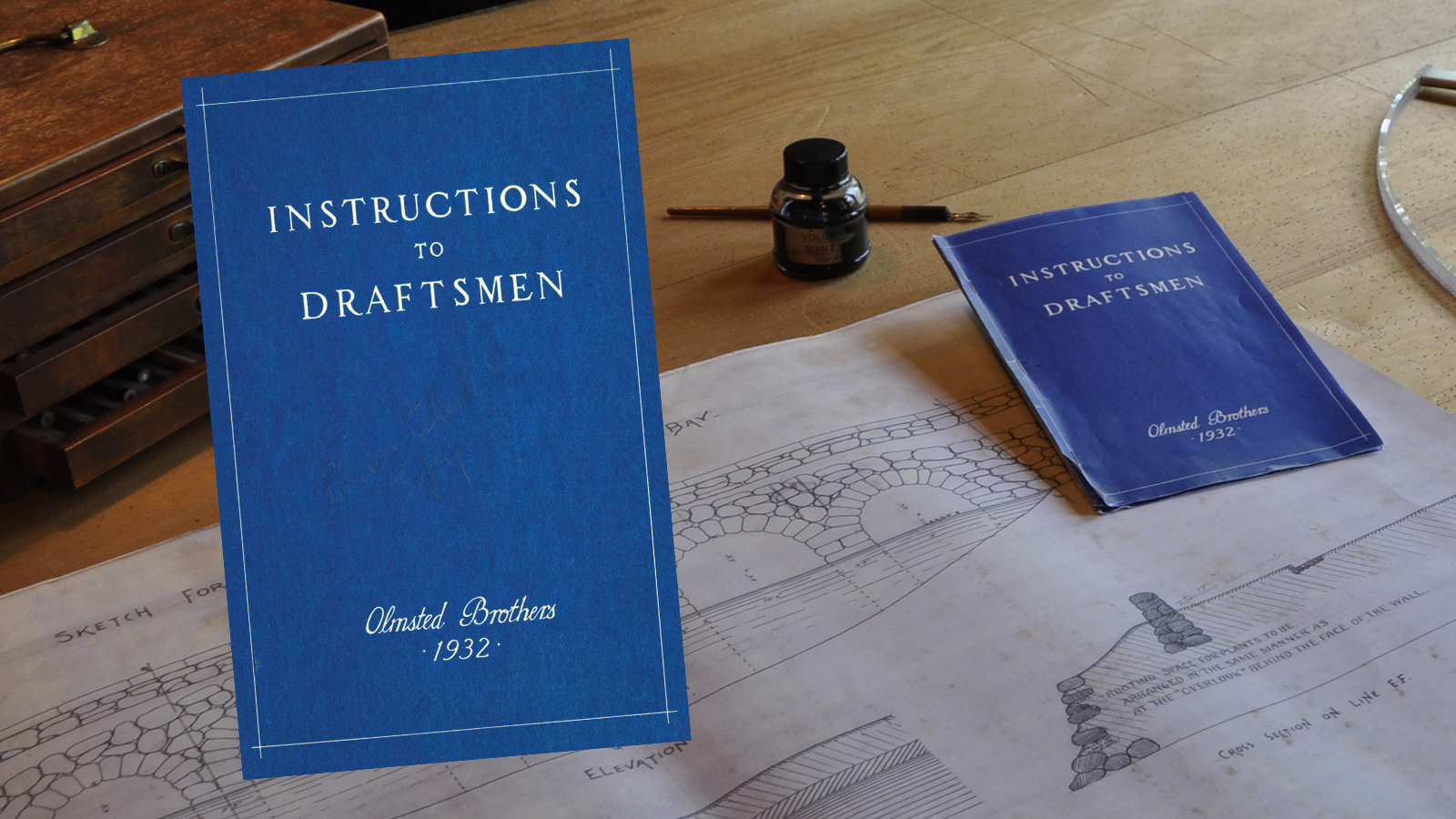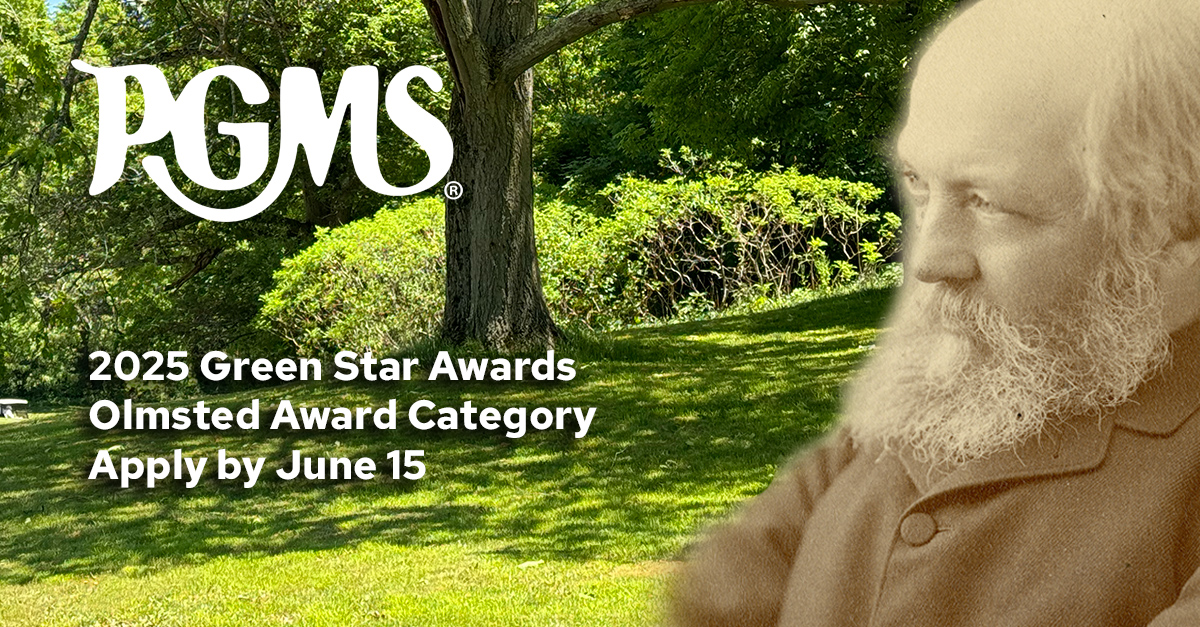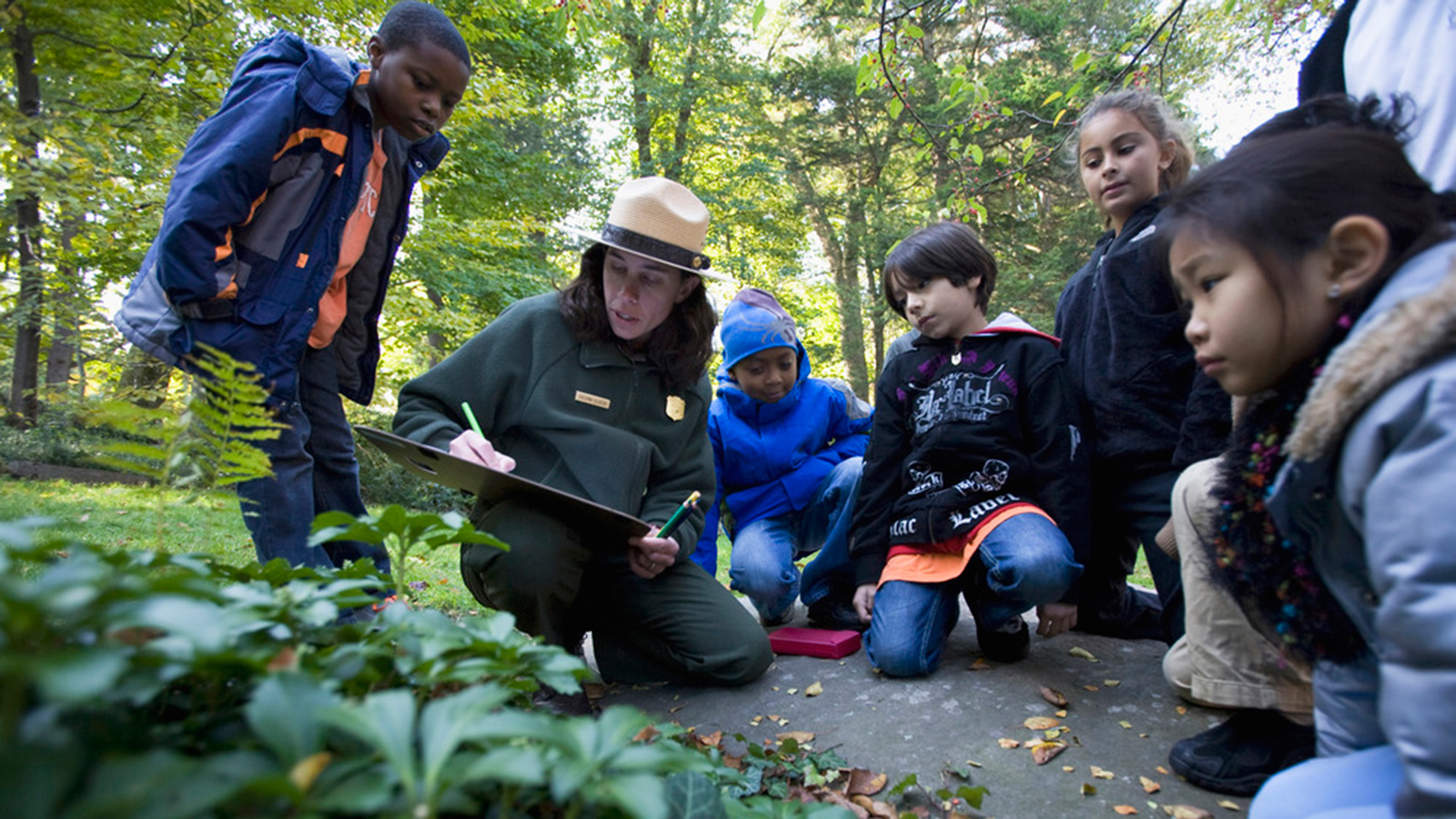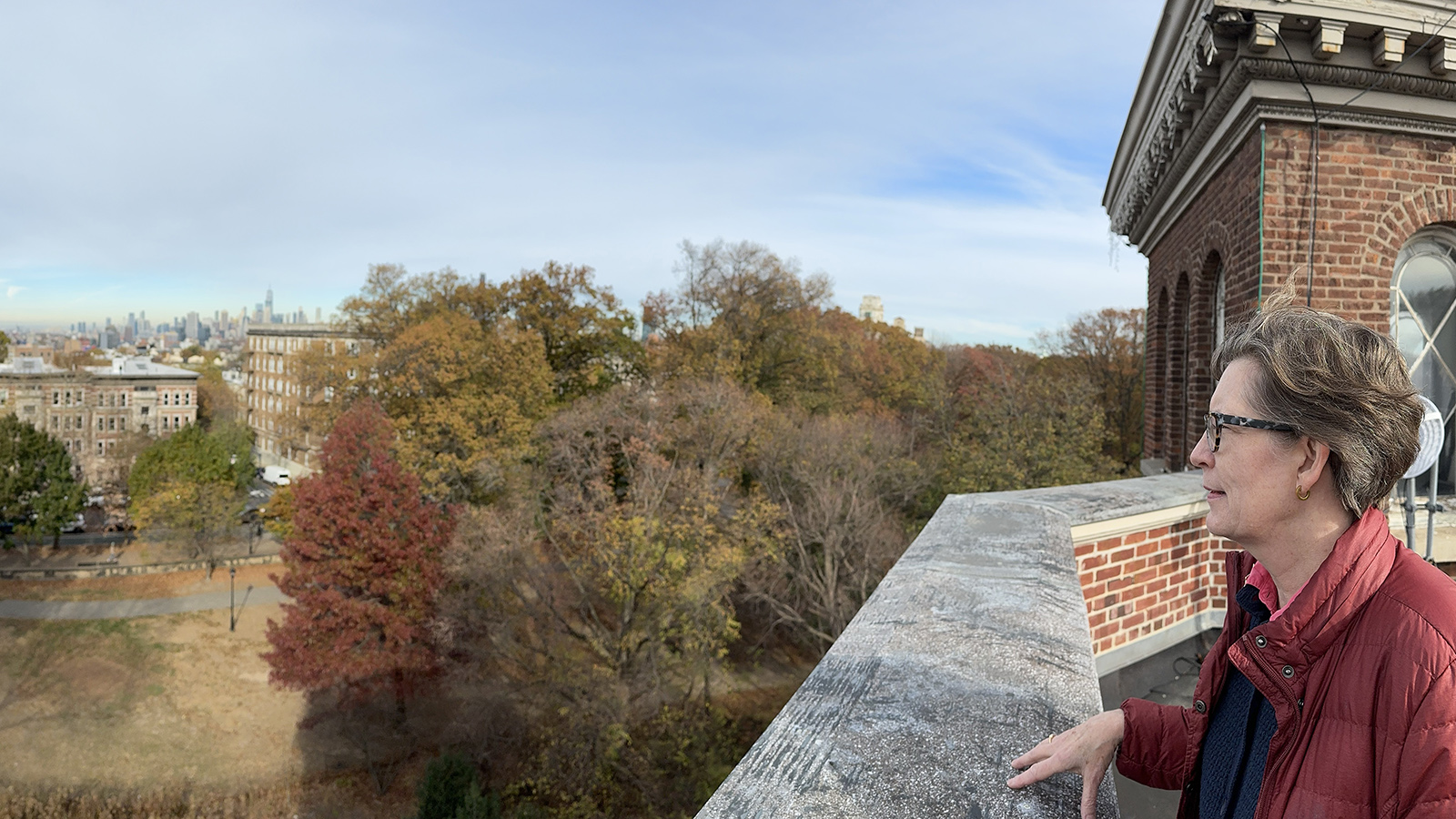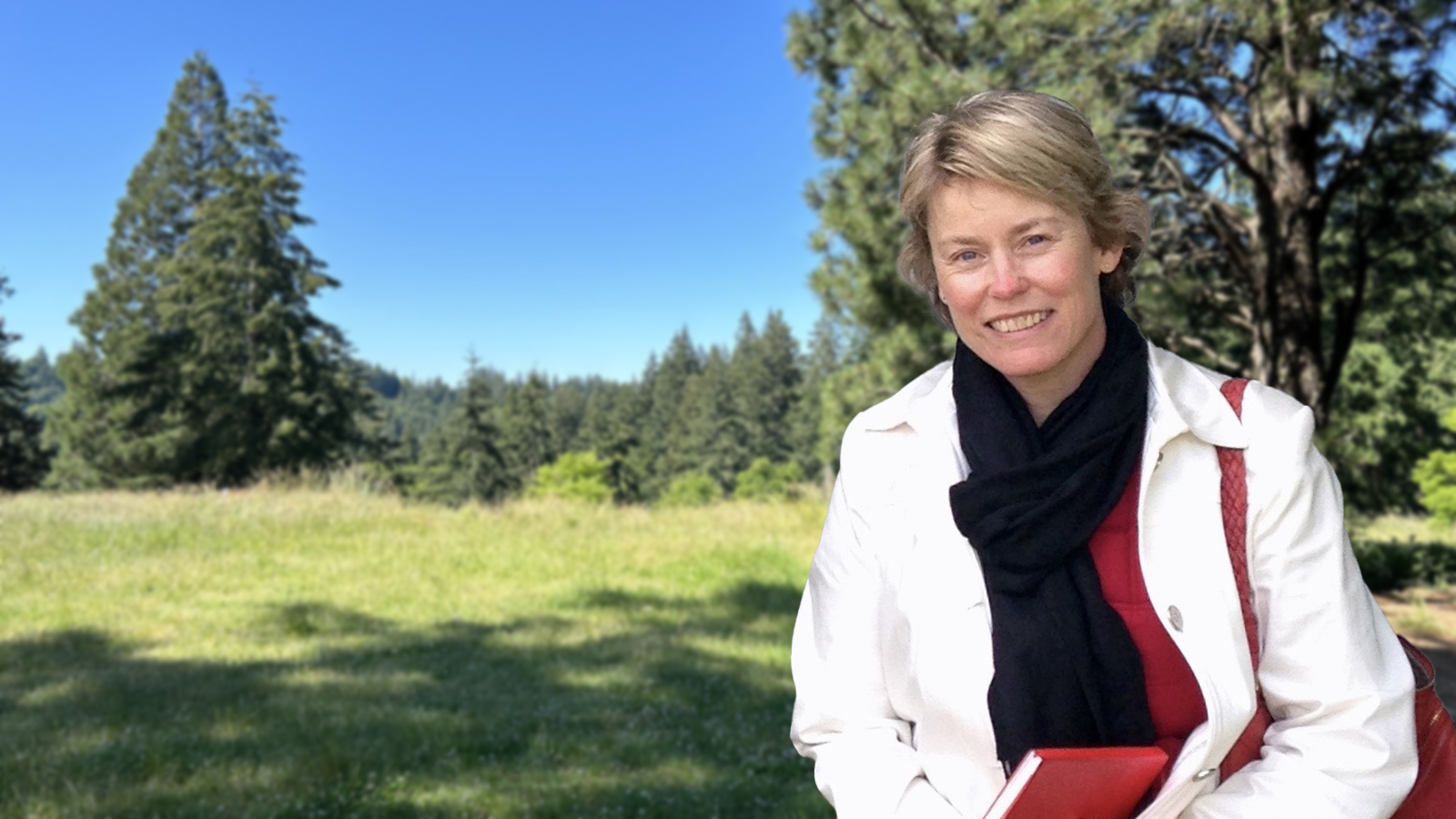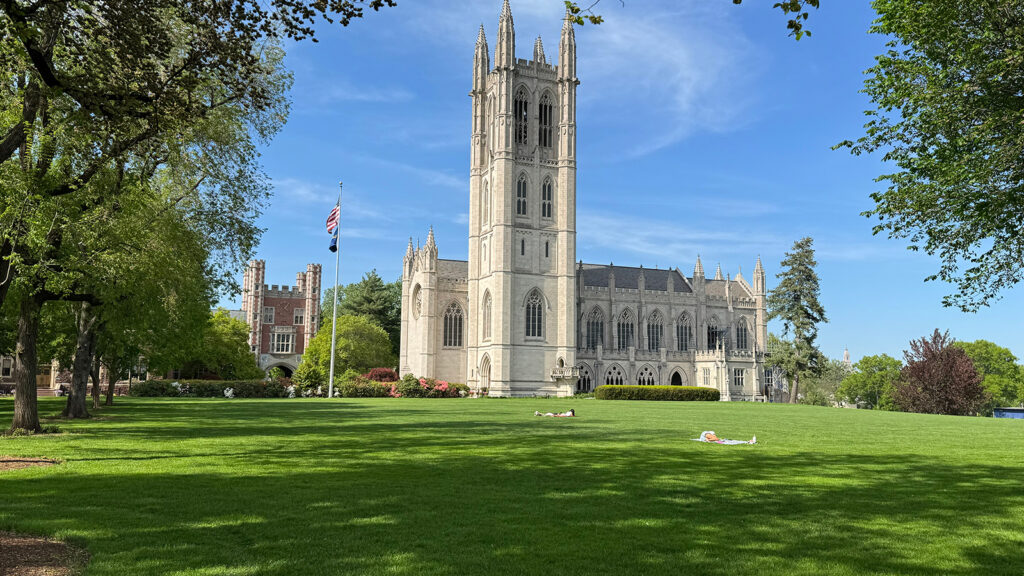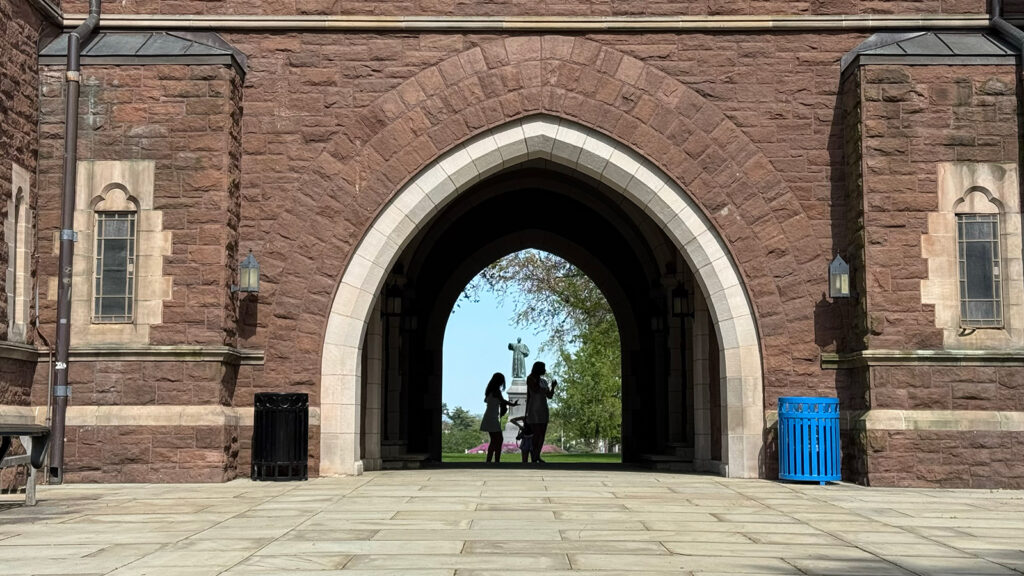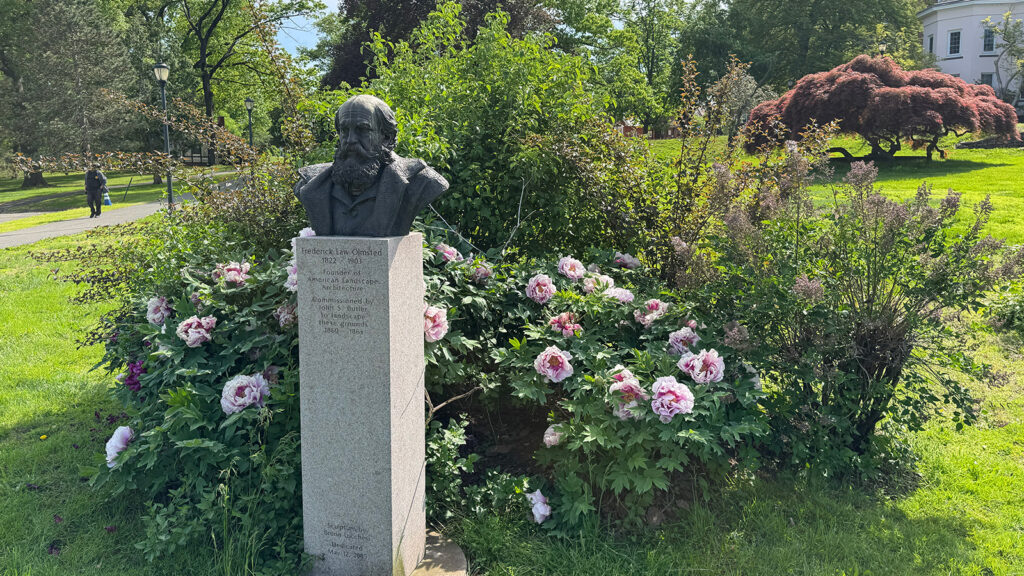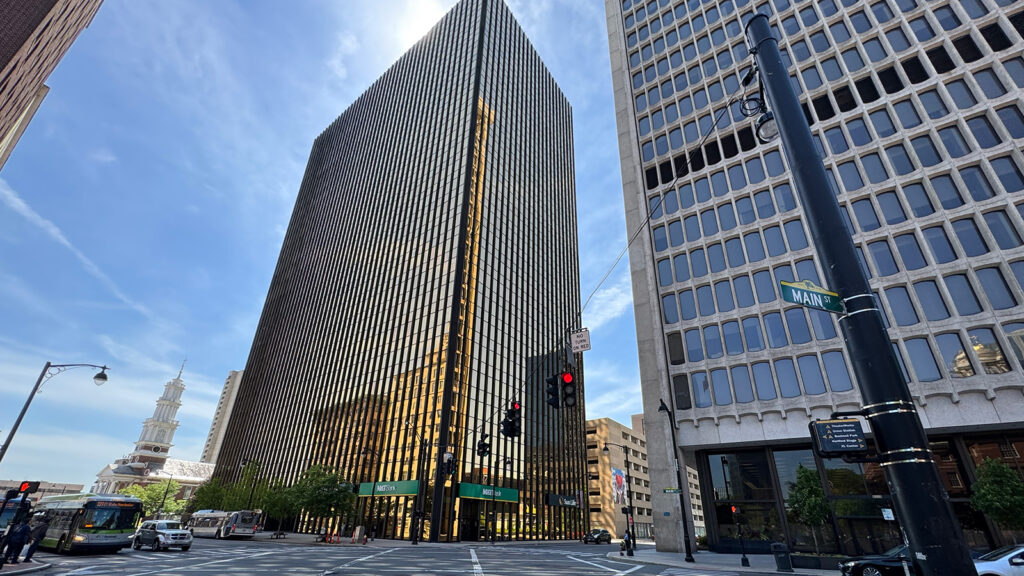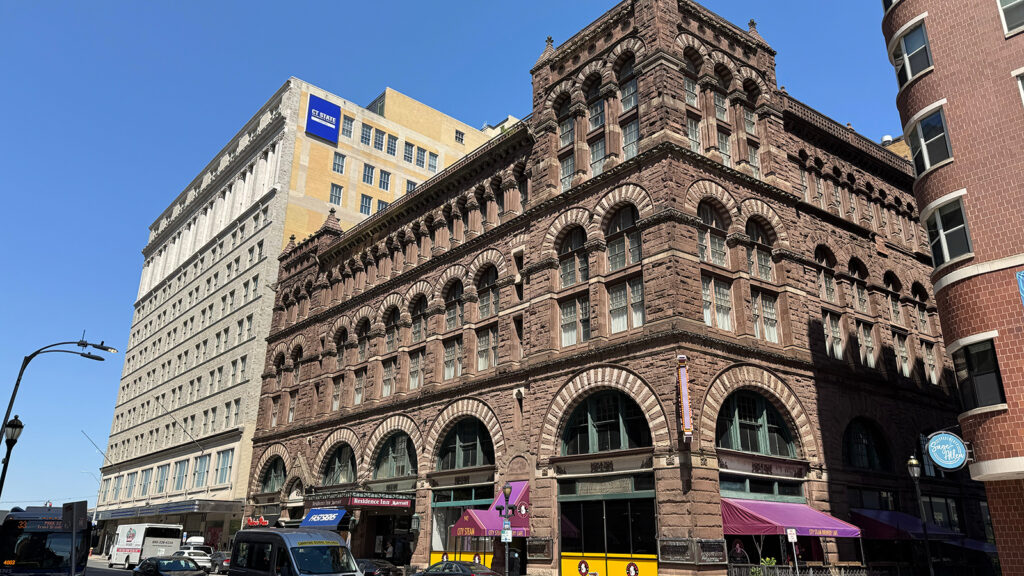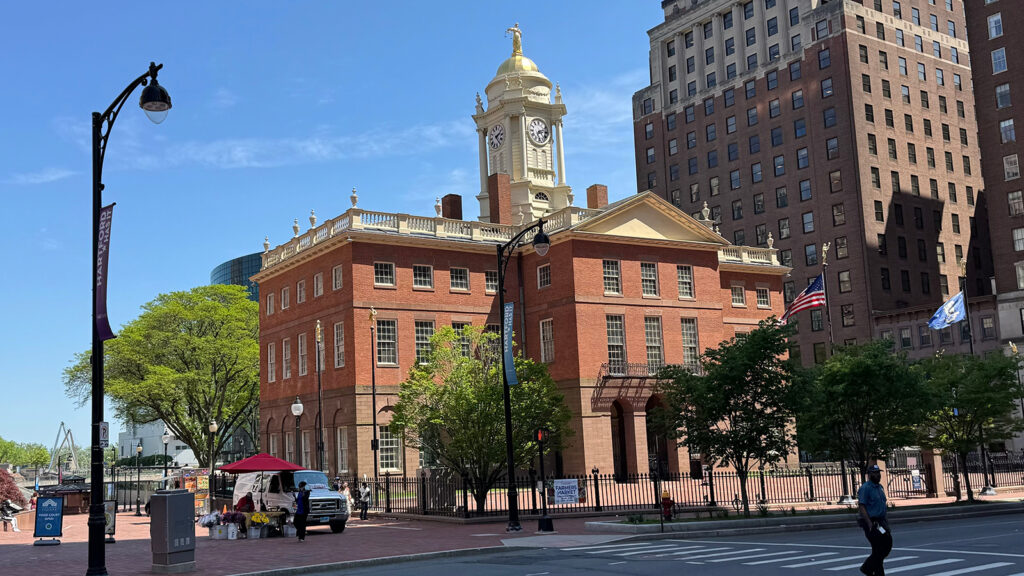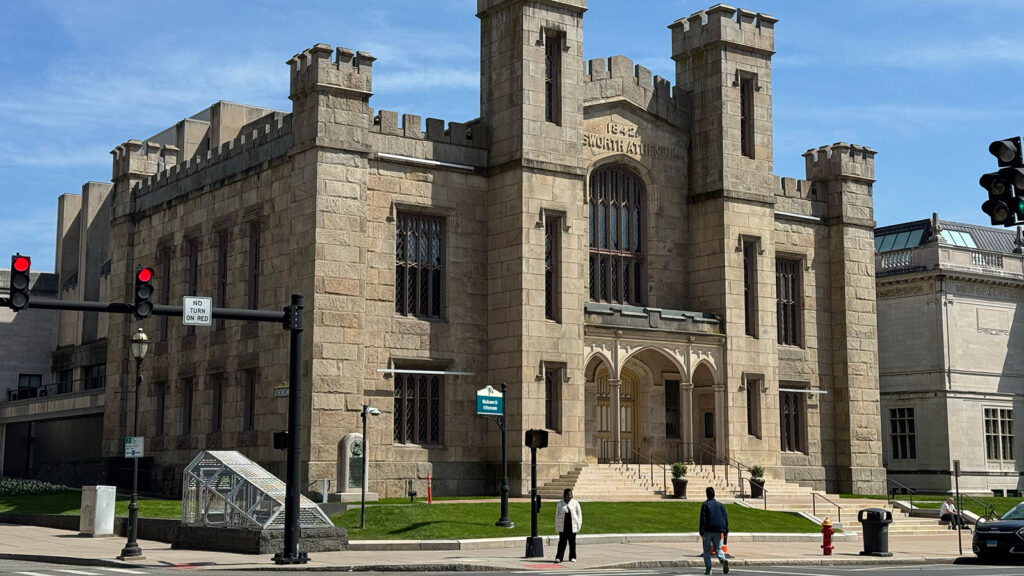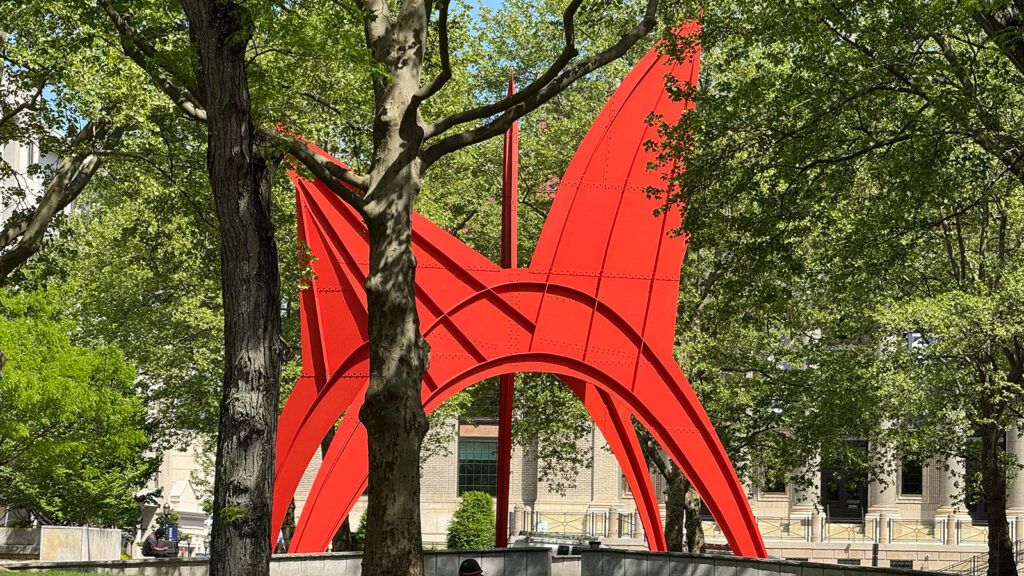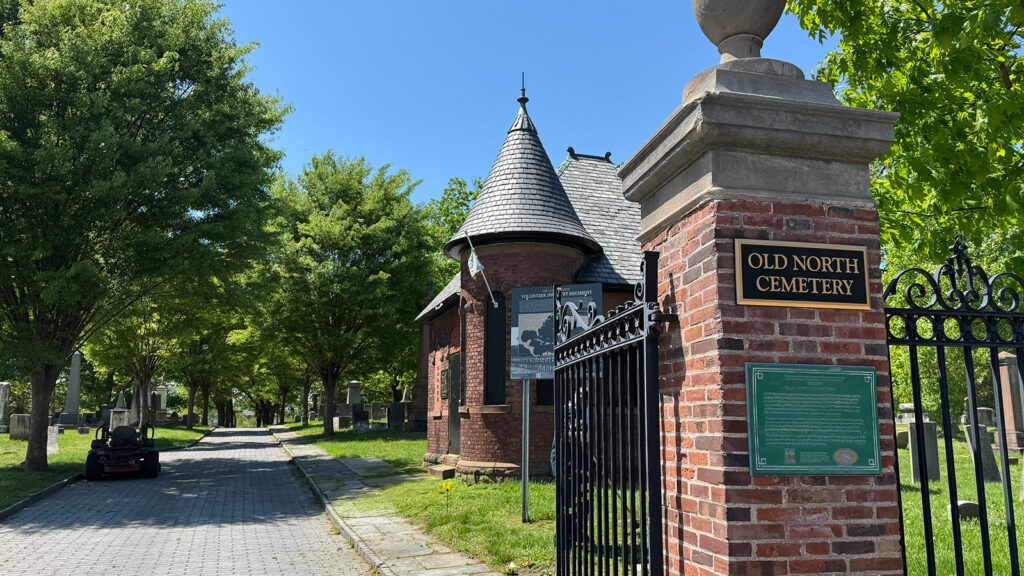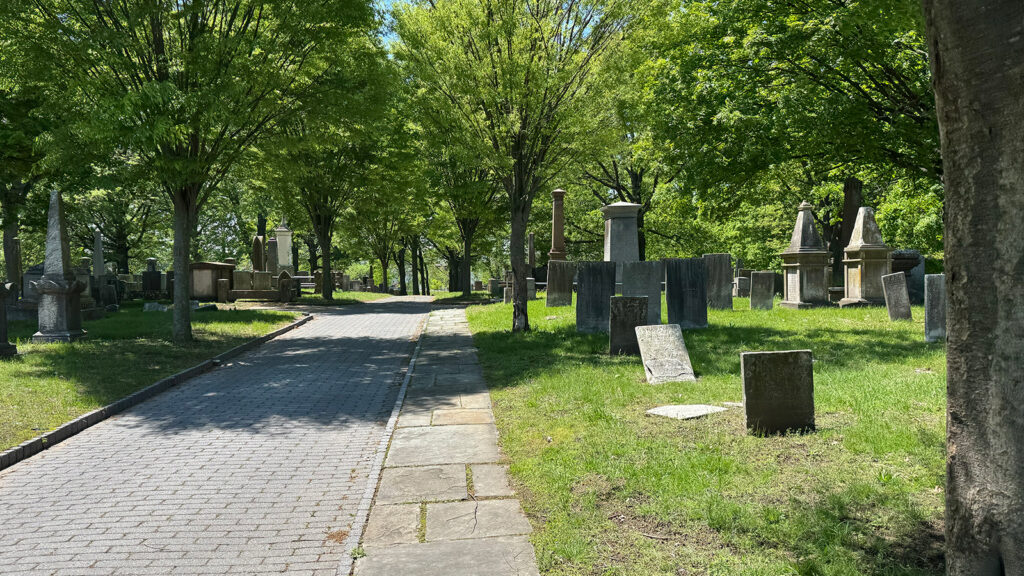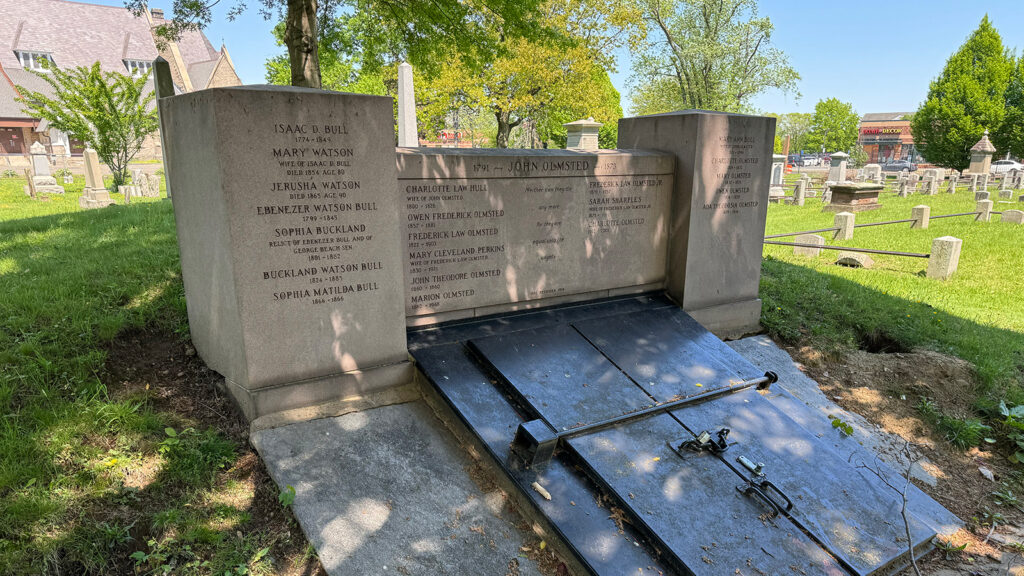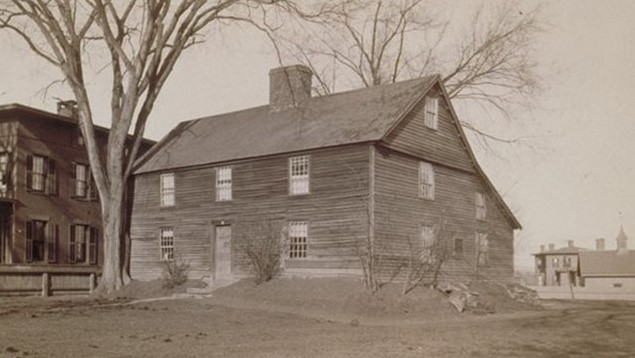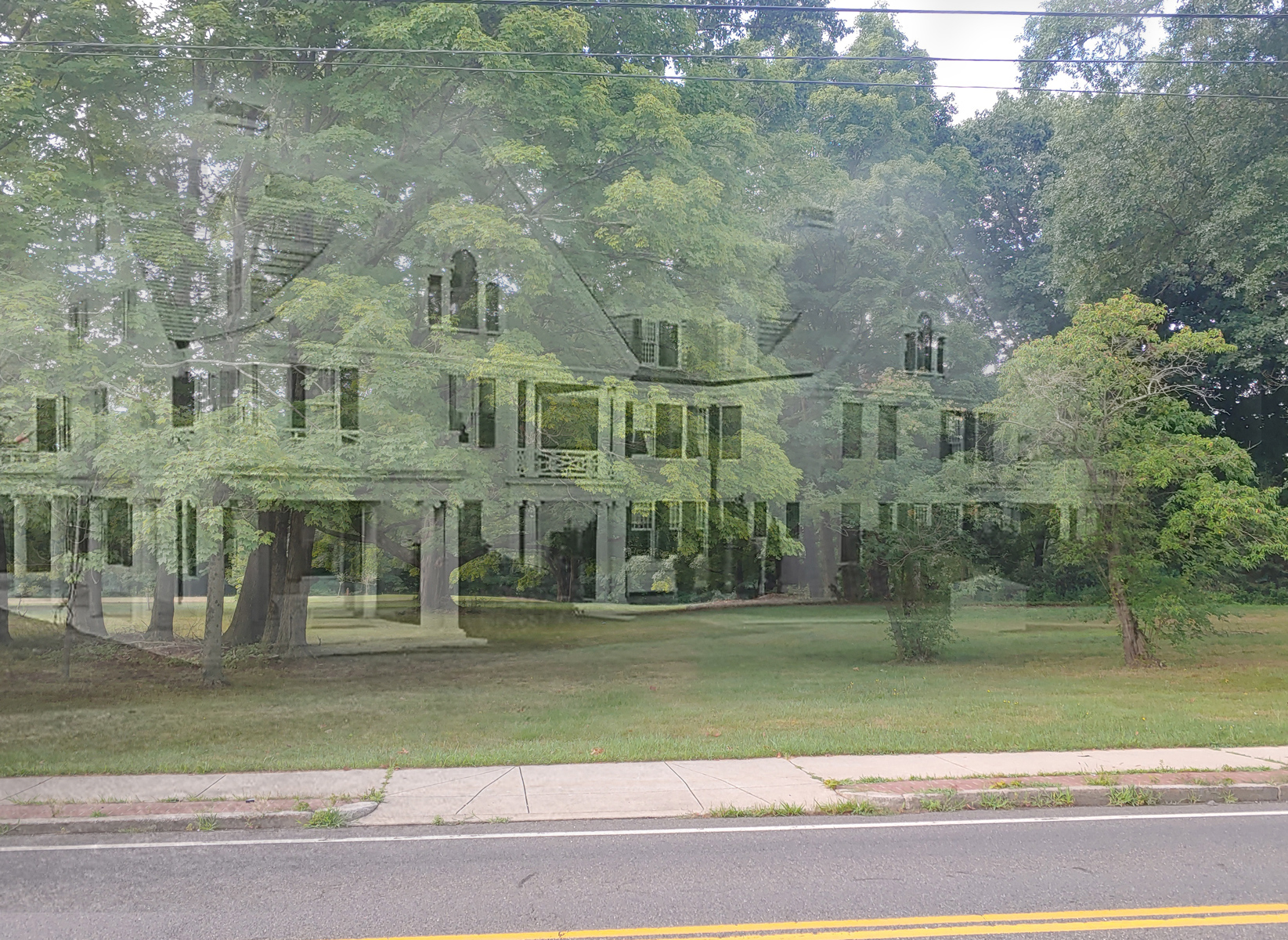
Frederick Law Olmsted was one of the most well-travelled men of his era, but his roots were always deeply planted in Hartford, CT. Born on College Street in 1822, generations of his family had lived in the city since its founding. His father, John, was a prosperous dry-goods merchant with a storefront on Main Street.
When Olmsted was growing up, the location of the state capital alternated annually between Hartford and New Haven. Neither willing to concede the title and both trying to outshine the other, each city grew exponentially in the nineteenth century, together becoming centers of industry and culture. Along with attracting cutting-edge technologies to build their factories there, some of the greatest writers, theologians and architects lived and worked in these Connecticut cities.
Historian Jana Colacino gives walking tours of Olmsted’s Hartford in her position as a site administrator for Connecticut Landmarks. One afternoon in early May, she agreed to take me on an abbreviated tour, but even so, we walked over five miles and drove even further. Not even half into her tour, I had to admit, “Jana, you’re blowing my mind.”
“Am I? Good,” she said, and we marched on.
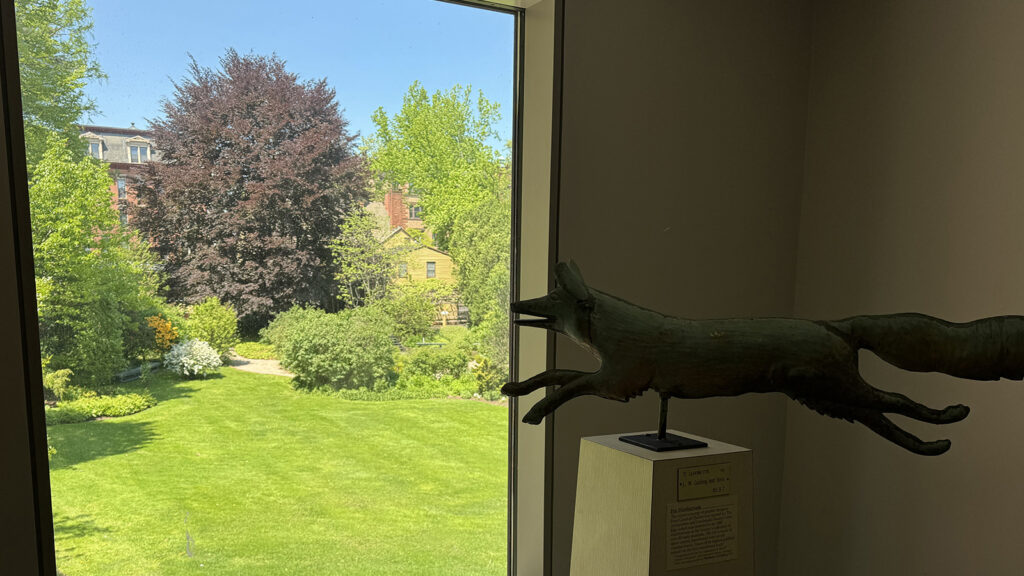
We started our walk in the gardens of the Butler-McCook House. Connecticut Landmarks stewards the house and eight others across the state, all of which are curated as museums. Their offices are in a historic brick home (the second oldest still standing in the city) moved to a corner of the Butler-McCook property. The backyard with its sweeping lawn, ancient tree and ornate flower garden was designed by Jacob Weidenmann, a Swiss landscape architect, Hartford resident and longtime protégé of Olmsted’s. He was one of two men I knew nothing about who would figure prominently in Colacino’s narrative.
From the historic house, we walked up Main Street a short way. Colacino explained that when Olmsted was born, the city was divided by a small, winding river that ran from west to east, emptying into the Connecticut River. Tanneries, pig farms and a dump were positioned upstream, and until Olmsted was 11, only temporary wooden bridges crossed the polluted waterway. In 1833, though, the Stone Bridge was built on Main Street, and it was a marvel of engineering. The longest single span bridge at the time of its construction. For a man who was to be involved in the construction of hundreds of bridges in his lifetime, it must have been a formative experience for young Olmsted. One of many!
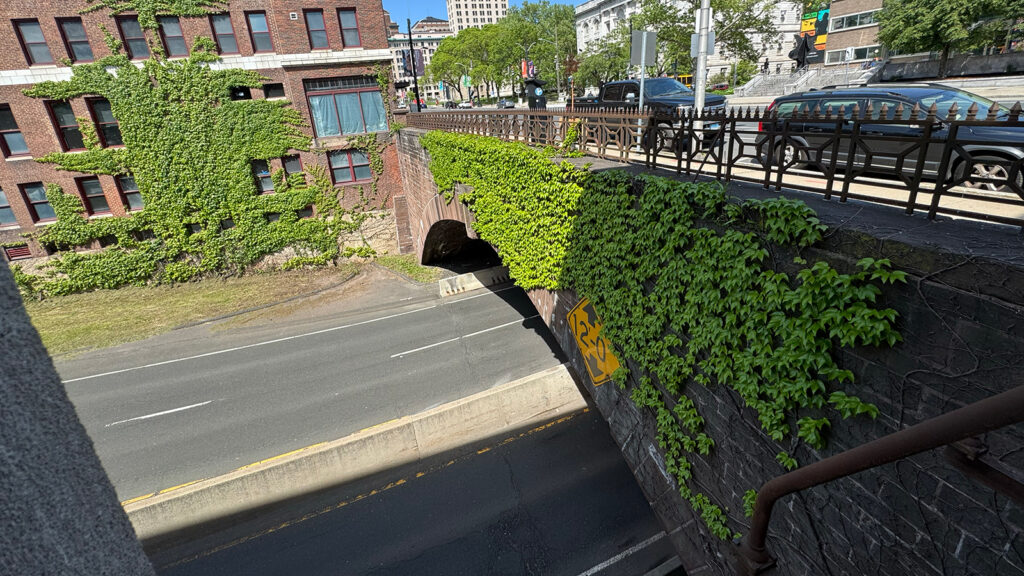
We turned onto Capitol Avenue, and a few blocks up, we took a break at the corner of a vast parking lot.
“This is approximately where the Dodd House once stood,” Colacino said. “It’s where Olmsted was born, and it’s one of three homes where he lived.” It’s unclear where the second house was, but we would visit the third and final home later in the tour. “Back then, this road was called College Street because further up the hill is where Trinity College was once situated.” She pointed to where the golden dome of the State Capitol now stands. “When the government was permanently moved to Hartford in 1875, they wanted that prominent position, and Olmsted was consulted on where they should relocate Trinity.”
As we headed up the hill, Colacino told me about how Olmsted and his father would often head out from Hartford on walking trips to faraway towns. These were no ordinary jaunts. The distances they sometimes travelled were astonishing.
“When you go home, take a look where Cheshire on a map,” she said. “Over 20 miles away!”
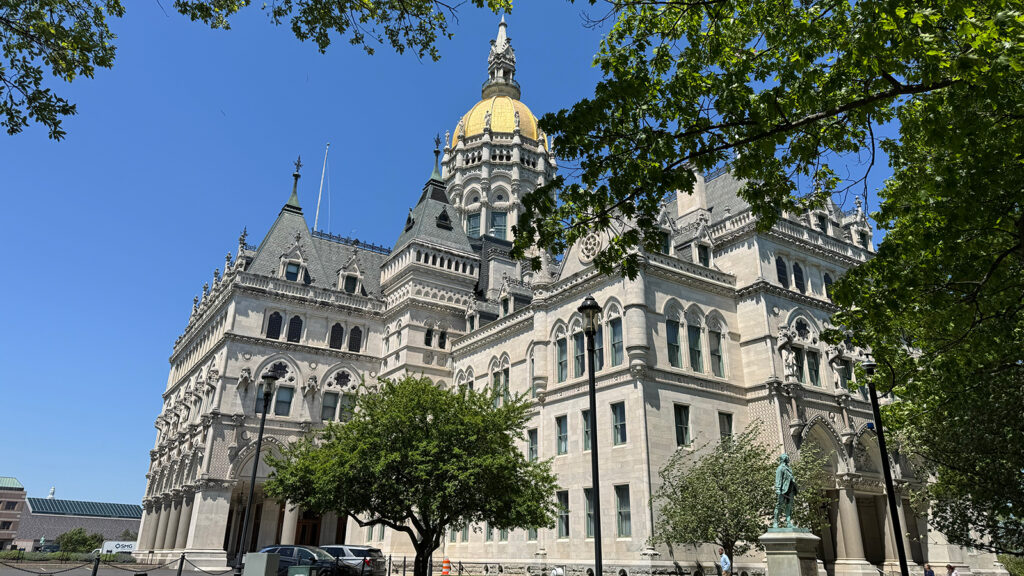
Sweeping around the base of Connecticut’s State Capitol (Job No. 00613) is the magnificent Bushnell Park (Job No. 00801). So many people believe this is an Olmsted park, there’s a sign explaining that it is not. Again, Jacob Weidenmann designed it, but it’s the story of the park’s origins that astonished me.
Horace Bushnell was a Congregational theologian and preacher living in Hartford during Olmsted’s youth. Though his family did not attend Bushnell’s church, his sermons and beliefs were well known. A key concept Bushnell spoke about was “unconscious influence,” or the notion that our thoughts are framed by more than words and ideas. Even when being silent, people radiated this influence, and the quality of one’s environment could do the same.
It was Bushnell’s idea to build the park that would later bear his name. The location he chose was not an obvious one. Remember those tanneries and pig farms polluting the river that ran through the city? Bushnell thought the park would work best where they were, on the banks of the river, facing the slums and tenements lined along it. And how to pay for the park? His solution was even more unlikely: have the public raise the funds necessary, as it would become their park. The public wasn’t so sure.
The next part of the story that Colacino told me so challenged what I thought I knew about Olmsted and Central Park, I quote directly from the history page of the Bushnell Park Conservancy website, as I still don’t trust my notes:
“However, after hearing Dr. Bushnell’s presentation in October 1853, the Hartford City Council voted unanimously in November to spend public funds— $105,000— to buy the land that was to become Bushnell Park. Hartford voters approved the expenditure on Jan. 5, 1854, by a vote of 1,687 to 683, making it the first municipal park in the nation to be conceived, built and paid for by citizens through a popular vote.”
The website explains that other park advocates— such as Andrew Jackson Downing, who championed the idea for Central Park— sought private funding for their public projects. Three years before Olmsted was hired as Superintendent of Central Park in New York, his hometown in Connecticut was already charting the way forward.
“Did Olmsted and Bushnell know each other?” I asked.
“Know each other? They were next door neighbors! Olmsted’s dad eventually bought his house when Bushnell moved,” Colacino said. “We’re heading there next.”

Standing at the edge of another parking lot with Interstate 84 roaring by, Colacino showed me where the two families once lived. She quoted from a letter describing how the theologian would work in his garden just across the fence. As I took that in, she explained that Bushnell wasn’t the only local influence on the future landscape architect. Olmsted’s step-uncle, Ebenezer Watson Bull, lived just down the road, she said, pointing to where the highway now turns abruptly.
“Uncle Ebenezer had a large, lush 16-acre garden that was regularly described as being one of the finest in the state,” Colacino said, “and he was known for leaving the gate open and allowing the public to wander at will.” When he died prematurely in 1843, the step-uncle’s property (known as the High Street Garden) was suggested as an early possibility for Hartford’s first public park.
With Colacino’s help, it’s easy to understand how Hartford nurtured Olmsted and set him up for the park-building career to come. Walking around Hartford, though, it’s less easy to see actual landscapes designed by the man who was born there. In 1861, while still working on Central Park in New York, Olmsted and Vaux provided a plan for the Institute of Living, then known as The Hartford Retreat for the Insane (Job No. 12015), the state’s first hospital. Colacino explained that as the two men could not leave their work in Manhattan, the plan was implemented by Weidenmann, who had to make several adaptions to the plan that the New York-based designers had not anticipated.
Trinity College (Job No. 00601) eventually adopted one of the sites Olmsted had proposed for relocation, but they only implemented some parts of his design for the school’s new campus. In New Britain, a town that’s a short drive from Hartford, is Walnut Hill Park (Job No. 00600), designed by Olmsted and Vaux after the Civil War. Inside the city limits, though, it’s the work of the Olmsted Brothers firm that dominates, woven throughout the neighborhoods. We visited Keney Tower at the northern end of Main Street with its grounds designed by FLO’s sons. It was built to honor Henry Keney’s mother. Later, the Olmsteds designed Hartford’s largest public park, Keney Park (Job No. 00803), named after Henry.
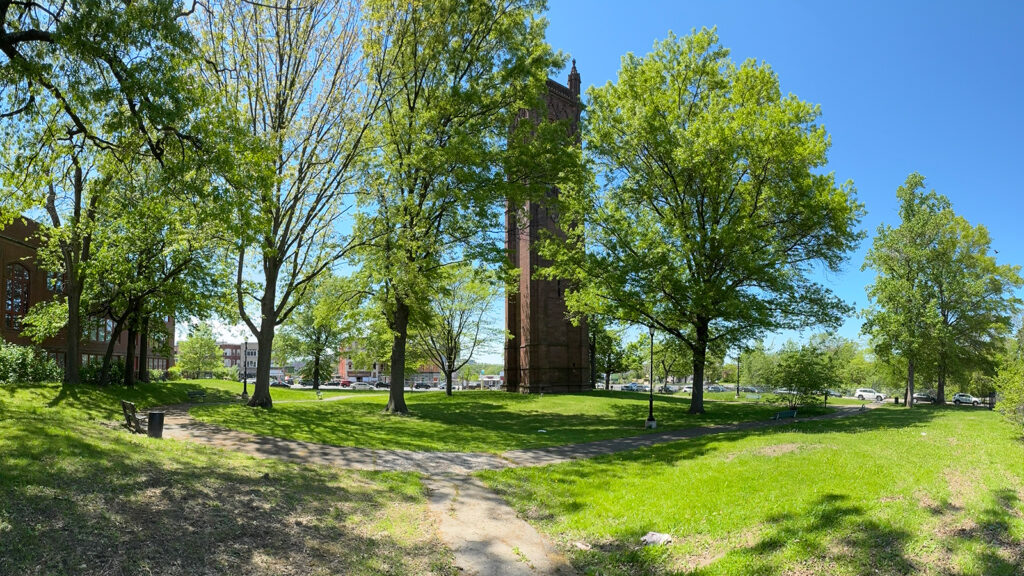
Several blocks from the Gothic clocktower is the Old North Cemetery (Job No. 02933), where John Olmsted had purchased a family plot. He, Frederick, his wife, children and extended family are all buried there. (John Charles Olmsted is buried next to his wife in Brookline, MA.) The family vault was a shady and solemn spot, but on the gravestones all around us were the names of people I was familiar with because Colacino had woven them into her story.
Colacino grew up in the Midwest and went to school there, but when she discovered Hartford history, she was both astonished and hooked on researching it and sharing the results. Her passion is infectious. I’ve lived in Massachusetts, less than an hour north of Hartford for years, but I’d mostly driven through on the highways that bisect the city. Now, I’ll be coming back to enjoy all the sites my guide and I raced by on our “abbreviated” tour.
First on the list: I only caught a glimpse of the otherworldly Cedar Hill Cemetery south of the city. Hidden in a forest at the end of a long entry road, the winding paths running through the wooded hills certainly reminded me of an Olmsted park. Colacino assured me, though: it was designed by Weidenmann.
———
Mark Roessler is a writer and photographer based out of Northampton, MA. You can find his panoramic tours— several highlighting Olmsted landscapes— on his website: www.panorambles.com. All photos by the author.
